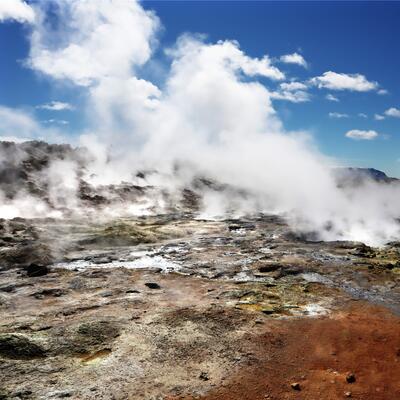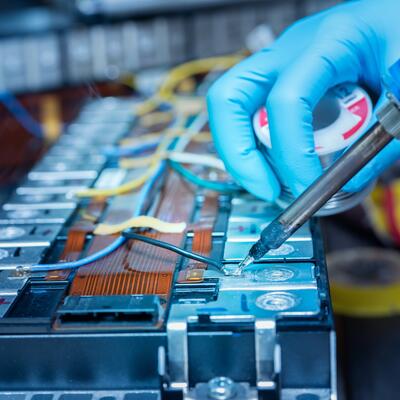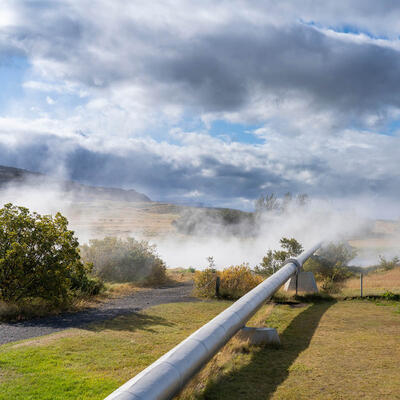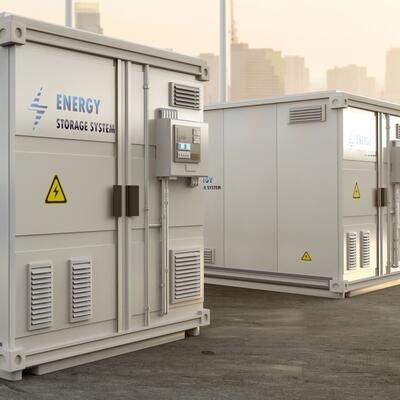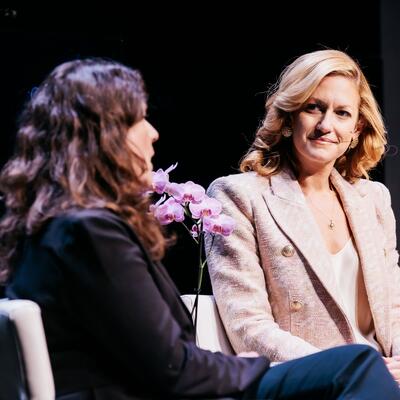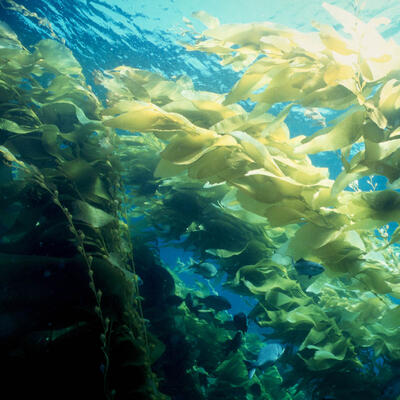
Peat, Kelp and Trees: Nature-Based Carbon Capture
Guests

Ugbaad Kosar
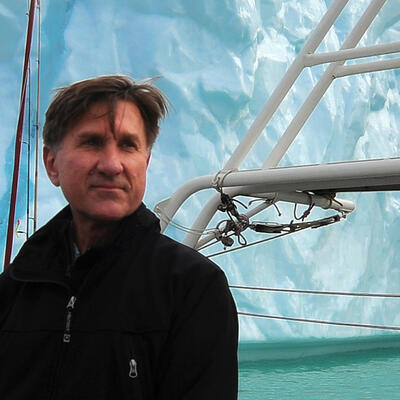
Edward Struzik
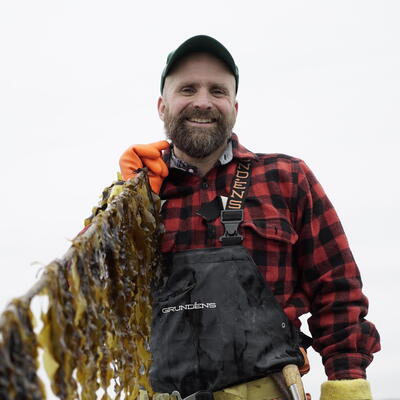
Bren Smith
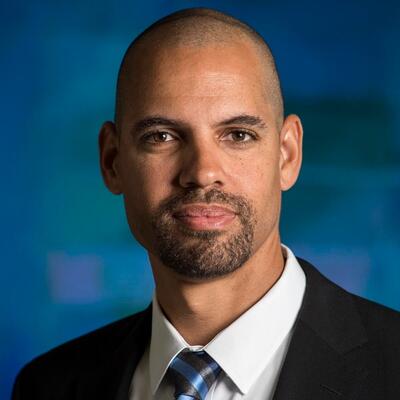
Benjamin Preston
Summary
Many climate efforts focus on carbon capture from power plants and refineries – preventing emissions before they reach the atmosphere. But even if we dramatically reduce emissions in the years ahead, we still need to deal with all the carbon dioxide already in the sky.
“We're talking about billions of tons of carbon that is just out there. And that carbon stays in the atmosphere for centuries and unfortunately because of years of inaction in some cases, obfuscation and distraction from extractive industries and ultimately the failure to aggressively stop our carbon emissions. We’re just now in a place where focusing on emissions reductions alone is just not enough,” says Ugbaad Kosar, deputy director of policy at Carbon180, a nonprofit focused on carbon removal.
Nature already has many ways of capturing carbon dioxide in forests, soil, peat bogs and kelp beds. And with help, we could create more natural carbon sinks.
“Existing U.S. forests already capture nearly 12% of our domestic emissions each year. That’s not an insignificant number,” Kosar says. “There are studies that show that U.S. agricultural soils have the capacity to sequester up to 10% of domestic emissions each year. In addition to the carbon piece they bring so many additional co-benefits outside of carbon – whether it's cleaner air, cleaner water, improved productivity and increased resilience to climate change.”
But Kosar says there are limitations to these approaches, including the fact that they can be impermanent – trees can burn; bogs can be drained. And climate disruption will bring warmer temperatures and drier air, which can further limit or harm natural carbon storage mechanisms.
When most people think of peat, they likely think of Scotland and whiskey. But peatlands exist in many parts of the world and can be a powerful tool in natural carbon sequestration.
“Peatlands, which represent only about 3% of the world's terrestrial surface, store twice as much carbon as all the world's forests combined. So, as carbon storage reservoirs they’re unmatched,” says Ed Struzik, author of the book, Swamplands: Tundra Beavers, Quaking Bogs, and the Improbable World of Peat.
Peat is partially decayed vegetation that builds up over centuries. Peatlands – generally bogs, fens, swamps and marshes, accumulate peat in waterlogged, oxygen-starved conditions, largely built on mosses. They can hold dramatically more carbon than trees, and offer a swath of other benefits, says Struzik, “mitigating flooding, filtering water, stopping and slowing a wildfire, storing carbon and also being a refuge for many animals in a period of extreme drought or wildfire.”
And they’re also very resilient – except when disturbed by human activity.
Unfortunately, humans have already destroyed most of the world’s peatlands, and continue to do so, using the material for energy generation or in agriculture. Once peatlands are drained or dried out, all that stored carbon is released back into the atmosphere.
“That's really one of the more important parts of the equation is finding ways of restoring degraded peatlands so they don't emit more carbon dioxide,” Struzik says.
The oceans have been absorbing huge amounts of carbon dioxide for decades, protecting us from mind-blowing amounts of climate disruption. Though their ultimate capacity is limited, some are exploring kelp as another natural method of carbon sequestration and a sustainable source of food. Kelp, or macroalgae, absorbs lots of carbon as it grows. When it dies, it falls to the sea floor, where it can stay for decades or longer. It’s unclear how much carbon is stored because few scientific studies have directly measured that process. Some companies are trying to harvest and bury kelp to accelerate carbon storage.
Bren Smith, a former commercial fisherman turned regenerative ocean farmer, says his career pivot happened after the cod stocks crashed in Newfoundland.
“There had been many people talking about overfishing and the environmental conservation community, but they presented it as birds, bees, and bears, just like they talk about climate change. And that does not resonate with those of us that are trying to make a living. But what I realized when the cod stocks crashed was like, "Oh, there aren't going to be any jobs on a dead ocean," like, of course, there won't be any food, but there actually won't be a job,” he says. “And I realized that I had to figure out a way to work with the ocean and be a steward in order to make a living on a living planet.”
Smith now farms kelp, scallops, mussels, and oysters in his ocean farm. He envisions farms like his up and down the coast as a real force for climate solutions: sequestering carbon, growing food and conserving natural habitat.
Related Links:
Swamplands: Tundra Beavers, Quaking Bogs and the Improbable World of Peat
Heat of the Moment podcast
Eat Like a Fish: My Adventures Farming the Ocean to Fight Climate Change
Full Transcript
Greg Dalton: This is Climate One. I’m Greg Dalton. To limit climate disruption, we need to pull vast amounts of carbon dioxide out of the sky.
Ugbaad Kosar: We’re now in a place where focusing on emissions reductions alone is just not enough. As important as that is, we still need to do something about all of those legacy emissions that are out there already.
Greg Dalton: Nature already has many ways of doing this.
Ed Struzik: Peatlands, which represent only about 3% of the world's terrestrial surface, store twice as much carbon as all the world's forests combined. So, as carbon storage reservoirs they’re unmatched.
Greg Dalton: So how can we maximize those powerful tools?
Bren Smith: If you were to take less than four percent of U.S. waters to farm seaweed, you could offset the entire agricultural carbon emissions of California.
Greg Dalton: Nature-Based Carbon Capture. Up next on Climate One.
Greg Dalton: Can humans use and improve upon the earth’s natural methods of capturing and storing carbon? This is Climate One, I’m Greg Dalton. A new IPCC report out this week further details the gravity of our inaction on climate change – predicting increasingly dire disruption to natural systems and billions of people around the world. Many of these climate hazards are here now, and are accelerating.
Ben Preston: We are really at a tipping point on climate change. I think people are realizing that the risks are very real, they’re upon us, and we’re behind in getting out in front of this particular challenge.
Later in the show, we’ll hear from one of the authors of the report, which strengthens the case for going beyond merely reducing emissions. We need to start sucking existing carbon dioxide out of the sky. Ugbaad Kosar is Deputy Director of Policy at Carbon180, a nonprofit focused on carbon removal.
Ugbaad Kosar: So, we're talking about billions of tons of carbon that is just out there. And that carbon stays in the atmosphere for centuries and unfortunately because of years of inaction in some cases, obfuscation and distraction from extractive industries and ultimately the failure to aggressively stop our carbon emissions, we’re now in a place where focusing on emissions reductions alone is just not enough.
Greg Dalton: Carbon dioxide removal projects can generally be divided between nature-based solutions like growing trees and tech-based solutions that are basically giant filters that pull CO2 out of the air. In both cases, the hope is to store that carbon for decades or longer. Next time, we’ll take a deep dive into tech-based solutions. Today we’re focused on nature-based solutions like reforestation, regenerative agriculture, peatlands and kelp. Kosar says it’s difficult to rank them because they all have unique benefits and are appropriate in different contexts.
Ugbaad Kosar: When you look at something like their efficacy or ability to remove carbon it does largely depend on what practices are being applied and what geographies under which climate and then even more granularity under which crop or tree type. That being said, when you look at something like forestry it’s probably the first thing that comes to mind for people as it is nature's own carbon removal machines. Existing US forests already capture nearly 12% of our domestic emissions each year. So, that’s not an insignificant number. And if we are to apply different practices like reforestation, planting more trees or improved management. So, thinking about ways to change the way we manage our forests to increase carbon stocks, we're able to actually increase this carbon removal potential to be hundreds of millions of carbon dioxide each year. So, that’s a really significant number and oftentimes reforestation is the one pathway that’s the single largest opportunity. When you look at the agriculture side which is sort of the second predominant land-based approach, this is essentially using our agricultural soils to capture and store carbon, something that already happens naturally, but by applying different practices, there are studies that show that US agricultural soils have the capacity to sequester up to 10% of domestic emissions each year. In addition to the carbon piece they bring so many additional co-benefits outside of carbon. So, whether it's cleaner air cleaner water in some context, improved productivity and increased resilience to climate change. But there are limitations to these approaches.
Greg Dalton: Right. So, we can solve climate and solve a bunch of other problems as well. There's a lot of talk these days about durability. Durability of policy because we’ve seen states and countries zig and zag on climate. There’s also durability of these types of solutions, you know, planting trees sounds good, but just planting a tree doesn't mean it's going to grow to maturity and trees burn.
Ugbaad Kosar: Yes, so, when you look at durability sometimes you may hear people say permanence as well. So, the permanence of the carbon that's being stored. Ultimately, we want carbon to be stored as long as possible. That being said, we’re talking about a living system. So, carbon is going to just move through these living systems. It's just a natural cyclical process. So, no matter what we do, some amounts of carbon are just naturally going to be released back into the atmosphere through things like respiration. Climate change is also putting pressure on durability of carbon storage. Referring back to the wildfires for example, we're seeing that as much management as we want to do and as much as we want to think about forest carbon management, a lot of those wildfires are just releasing that carbon right back into the atmosphere and therefore just getting back into that vicious cycle. So, what we really need to hone in on for land-based carbon removal is something called monitoring, reporting and verification or MRV. This is really important because we need to better understand how carbon is actually moving through the systems and how much is actually being stored that we are really meeting the climate goals that we’re setting out to meet. For forestry there is a tree nursery capacity issue. This is a major limiting factor when we think about reforestation. You need nurseries that help provide the seeds and the seedlings that are then going to be planted. Unfortunately, where we’re at today we need to actually increase annual production about 2.4-fold to meet the reforestation goals out there.
Greg Dalton: So, which one of these work without human management, and which don't need our help? Is it better to turn carbon into rocks for example than into soil or trees?
Ugbaad Kosar: So, you can just leave a forest alone, and it will be able to go through its photosynthesis processes. Unfortunately, because of climate change it's not able to do that as well as it used to. So, no matter what approach you look at, some amount of human intervention at this point is needed, unfortunately. So, when I think about things like nature-based versus tech-based sometimes that dichotomy gives the image of nature-based being natural as in without human intervention and technology being essentially of human intervention. And that's just not the case of where we’re at right now as much as we would love to allow the systems to just regenerate on their own and do what they need to do which can happen in some cases there is still a need for some amounts of human intervention with really any sort of climate mitigation strategy we’re working at right now.
Greg Dalton: Yeah, can’t just put it on autopilot. What do you think of biomass energy with carbon capture and storage where plant material is burned to produce energy, but the carbon is captured and somehow stored? The idea is this could be a power source with negative carbon emissions. Some of these ideas in the past burning wood pellets have turned out to be highly problematic. So, what’s your thought on that?
Ugbaad Kosar: The bioenergy space can be confusing and hard to navigate truthfully. I think what’s helpful is walking people through an example. So, if you were to imagine that you work on a farm and you’ve harvested your crops for the year. You look back at the fields and you see the stover that’s left there. So, your leftover leaves and your stalks you have to do something with that before your next planting season. Something that's happening now in many cases it’s just open burns. So, you just pile up all those leftovers and then you burn it. And obviously this is gonna emit carbon, it’s a fire, there's a lot of air-quality implications, especially for surrounding communities. Oftentimes our environmental justice communities and just other effects like that. So, this option that you're mentioning is you use that left-over pile as “feedstock” or source of energy and then you can burn it in a facility as you mentioned to convert whatever those leftovers are into useful things like energy or fuel. And then the facility is also able to capture that carbon emitted from the burning process and store it underground. But it's really important to know that there's a lot of concerns there's a lot of questions and uncertainties in how we’re actually going to be able to scale bioenergy systems without having impacts on land or having impacts on people or having impacts on other resources that we need and still do it in a really sustainable way.
Greg Dalton: Regenerative agriculture is the concept that certain practices like no-till farming or planting cover crops or planting trees near farms known as agroforestry can sequester carbon, rather than releasing it. What’s the potential for that?
Ugbaad Kosar: I mean there are a lot of benefits for things like regenerative agriculture. I think with climate smart ag practices this is language that is used a lot more by the USDA now actually they recently announced that they are investing $1 billion in “climate smart commodities.” However, agribusinesses are the ones that are actually co-opting this conversation I find. So, their sort of endgame is actually markets and offsets in my opinion rather than really fundamentally cutting down emissions from their supply chains and also storing carbon in the soils that they use for their products. So, there's a lot of different definitions that are out there, but overall, I think what's important is we’re thinking about how can we implement practices like cover cropping or different agroforestry practices or just even conservation tillage. So, tilling your lands in a way that minimizes soil disturbance, these all can kind of fall under the umbrella of regenerative agriculture which is really how can we improve our relationship with the lands that we’re using to produce food essentially.
Greg Dalton: Right. And the regenerative agriculture space which is dominated largely by white men in part due to the legacy of the Homestead Act and other structural injustices. I think most people tend to associate environmental justice issues with industrial activities, fence line communities, smokestacks, those sorts of images. How do environmental justice issues come into play when talking about nature-based carbon capture and removal?
Ugbaad Kosar: Environmental justice is everywhere and it touches everything that has to do with climate. So, land-based carbon removal is definitely not an exception. I think there are different components to environmental justice which could be important to keep in mind. First, you have sort of local versus global versus intergenerational justice. Now, in that lens when you think about nature-based solutions or land-based carbon removal here in the US I think first, people just don't have access to capital to even get started in the space. And that creates the ultimate barrier and why you're seeing it being predominantly white-dominated. It’s very expensive to own and operate land and then also accessing loans is another hardship and often times discriminatory. So, that’s like the first environmental justice issue we see in the land-based side. I think for those that actually then get access to the lands those producers and forest landowners then have inequitable access to different technical and financial assistance programs. That also makes the idea of operating and converting your productions that much harder. And all of this really stems from just that long-standing culture of discrimination predominantly here at the USDA. The history of policies at the USDA and just that many other agencies really serve large-scale operations. So, don't really keep in mind things like specialty crops or just small-scale farms. The ones that are probably more owned by socially disadvantaged producers. And so, that also adds an additional environmental justice issue and barrier to access.
Greg Dalton: Right. When I read about the USDA plan recently for $1 billion toward climate smart ag it was commodity-oriented, which means corn, soy, wheat, which means big ag, right. It’s not towards more local specialty crops.
Ugbaad Kosar: And even if you think, not just here in the US, but if you look globally, I mean, there's also significant environmental justice issues there that also impact the decisions we make here in the US. So, there is a lot of sort of global north-south colonial dynamics that we’re seeing come to play where there is predatory behavior from big agribusinesses and food companies that are then going to Global South countries and driving things like deforestation or enforcing poor labor conditions and all that is really for the benefit of wealthier countries.
Greg Dalton: When did the concept of climate justice hit home for you personally?
Ugbaad Kosar: I started studying environmental science when I was doing my undergrad. So, I was already interested in just this general space but after my first year of my undergrad I realized that my family back home in East Africa in Somalia, they were being hit by droughts that we had never seen before, very unprecedented. And as a result of that my family who lived off of the lands and were herders and were nomads were no longer able to follow rainfall patterns and therefore couldn't herd their livestock and they faced a lot of crop failure as well. And the results of that was just a widespread famine that was honestly quite devastating. And I think that brought a lot of things into perspective for me. On one hand I'm sitting, I’m from Canada, so I was sitting in Canada in my classroom and I'm learning all about these models and this impending climate crisis and things that are going to happen. And it was all numbers and it was very factual. And then on the other hand, I am working with other Somali diaspora to support our families whether it's through research or connecting them or translating whatever it was to address what was ultimately a climate crisis. And I think that just really brought a climate justice lens to the work that I do and has followed me throughout the rest of my career.
Greg Dalton: How does this all tie back to your views on how to best implement carbon removal?
Ugbaad Kosar: So, it makes me think of what are the governance structures that we need to put in place to really ensure that equity is at the forefront and the center of what we do and that ultimately we're all rowing towards justice. I think on the land-based side things that have come to mind for me the first is specifically for indigenous groups, which again they are the original stewards of the lands. They are the ones who came up with all of these practices that we’re adopting now today. And I think using frameworks like free prior and informed consent and building that into any policy development or outreach that I do is critical. This has to be a collaborative effort. It's not one person that’s going to be able to solve the climate crisis or figure out how to scale land-based carbon removal. So, we need to find ways to uplift and fund and support public engagement and public input and just collaborative thinking. Really specifically rerouting power to groups like community-based organizations to help lead and support outreach and decision-making.
Greg Dalton: Ugbaad Kosar is Deputy Director of Policy at Carbon180. Thanks for coming on Climate One, Ugbaad.
Ugbaad Kosar: Thank you so much for having me. This was wonderful.
Greg Dalton: You’re listening to a Climate One conversation about natural methods of carbon removal. If you missed a previous episode, or want to hear more of Climate One’s empowering conversations, subscribe to our podcast wherever you get your pods. Coming up, we squelch into the boggy benefits of peat:
Ed Struzik: It certainly is a lot cheaper than trying to grow a tree because a tree really needs fertilizer. It needs a lot of water. And the risk associated with growing a lot of trees as we know, especially in places like California, is that you can burn 10 million of them down in a week where it's very difficult to destroy a fen or a bog because they're just so resilient.
Greg Dalton: That’s up next, when Climate One continues.
Ariana Dalton: This is Climate One. I’m Ariana Brocious. When most people think of peat, they likely think of Scotland and whiskey. But peatlands exist in many parts of the world, and can be a powerful tool in natural carbon sequestration. Peat is partially decayed vegetation that builds up over centuries. Peatlands – generally bogs, fens, swamps and marshes, accumulate peat in waterlogged, oxygen-starved conditions, largely built on mosses. They can hold dramatically more carbon than trees. And they’re also very resilient - except when disturbed by human activity. Ed Struzik is author of the book, Swamplands: Tundra Beavers, Quaking Bogs, and the Improbable World of Peat. He described one of the most fascinating peatlands he visited for his book, on Banks Island in the very high Arctic.
Ed Struzik: We passed through vast wetlands, we saw musk oxen, this shaggy prehistoric looking figure. There were peary caribou, arctic fox, hares, lemmings, there were rough-legged hawks and peregrine falcons nesting it was just full of life. And really, I was trying to figure out why it was so busy why this was such a biological hotspot when most of the Arctic Archipelago is a desert. And the common denominator is really that it was peat. There are layers of peat all across that valley that are up to 6 feet, 9 feet deep. And as every gardener knows, peat really is a wonderful medium for growth. And so, this was absolutely the beginning of an exploration of peatlands from all over the world, many of which we've lost, especially in the United States where probably about 80% of the peatlands have been drained over the centuries.
Ariana Brocious: So, where does restoring and preserving peatlands rank in terms of a carbon removal solution?
Ed Struzik: It ranks as high as possibly can because if you think about it peatlands which represent only about 3% of the world's terrestrial surface store twice as much carbon as all the world's forests combined. And if you look at particular peatlands such as the Hudson Bay lowlands which surround Hudson Bay in northern Manitoba, Ontario and Québec they’re the largest intact peatland in the world. They store five times more carbon than the equivalent area in the Amazon rainforest. So, as carbon storage reservoirs they’re unmatched.
Ariana Brocious: How quickly can peatlands soak up carbon dioxide if they are restored or rewetted?
Ed Struzik: I think that the most important thing is not so much that they sequester it. They do so to some extent not as effectively as trees. But what you do by rewetting it is you're keeping what's there in the ground. And I think that's really one of the more important parts of the equation is finding ways of restoring degraded peatlands so they don't emit more carbon dioxide than they are doing now.
Ariana Brocious: So, what are the tipping points where peatlands and other sorts of swamplands go from being carbon reservoirs or sinks to carbon emitters?
Ed Struzik: I think the biggest factors are when we start disturbing it and it does not like to be disturbed because once you dig up a peat it’s exposed to oxygen it dries out and the carbon just goes poof up in the air. And I think that's the biggest challenge that we face right now and going back to say the Hudson Bay lowlands which are probably the most important carbon reservoir in the world. There are now, I think over 1800 mining claims in that area and there are plans to build roads through it to get at those minerals and many politicians are very supportive of this because they think it's going to be the next great economic driver in the country. But if it goes ahead it's going to release an awful lot of carbon.
Ariana Brocious: Yeah, as you mentioned, humans have destroyed and drained a lot of the peatlands throughout the world. And in the U.S., Congress even passed multiple swamp acts in the mid-1800s to get rid of some of these lands. What were some of the reasons for that at the time?
Ed Struzik: Well, it started off with the Virginia settlers who had a plan in place. They ran out of area to grow tobacco and there is a Great Dismal Swamp on the North Carolina border and the idea was that they could drain it; they could expand their agricultural area. And one of the first companies to actually do this, corporations, was headed up by George Washington. And he used enslaved labor, including his own and his business partners to try and drain it, and they weren't successful in growing crops; it just didn’t work out that way. But what they did do was that they opened up enough area to cut down the white cedars, the Atlantic white cedars which extended all the way from Maine down to the Great Dismal Swamp in order to produce the cedar shake shingles. And this went on, Congress invested in the company and Congress thought that this was a great idea and they passed swamp acts in 18, what 59, 60 and 65 for the purpose of clearing the land for agriculture and for lumbering. And they drained 65 million acres of swamplands in a very short period of time.
Ariana Brocious: So, how much of this destruction of peatland continues today for uses like fuel or for clearing land for agriculture?
Ed Struzik: Still quite a bit, you know, in fact, surprising an awful lot. If you look at Finland, Ireland, Estonia, they get, you know, not a large percentage of their electrical power, but they get quite a bit of it from peat, they burn peat to produce electricity. In Canada and Minnesota there's an industry built around agricultural peat products. So, that continues to be done. Africa is now beginning to look at draining their big bogs to produce electricity because they are a growing population and they don't have a lot of alternatives other than renewable resources which they're not investing in because they're costly and the World Bank is not supporting that. So, we’re seeing quite a bit of that going on in Indonesia, you know, they are draining peatlands to grow palm trees.
Ariana Brocious: Is there just not a widespread awareness of the carbon value with peat? I mean why is this still being considered a fuel you mentioned access to resources as one factor. But in places like Europe, it would seem like they have other opportunities.
Ed Struzik: They do and you know Europe is basically turning the tide, especially countries like Germany, the Netherlands and Great Britain the United Kingdom are as well. One of the reasons being is that they're running out of peat, you know, Germany, the Netherlands have lost I think over 90% of their peatlands and they’re suffering the consequences not just just because it's carbon that's been lost and trying to keep what's left in the ground. It's because by removing so much peat they've lost an awful lot of biodiversity because there are so many critters in the world that rely on peatlands to nest. For example, in North America we have 1 to 3 billion birds representing over 300 species that fly from the southern United States and South America to the boreal forest peatlands to nest. So, the other reason why Germany and the Netherlands and other countries are doing it is because by removing so much peat over the centuries they've dug themselves below sea level. And with sea levels rising now they're having a huge inundation of storm surges that are swamping them. And so, they’re using peat as a method, mosses like sphagnum can hold 25% of their weight in moisture. So, this is a pretty good way of dealing with flooding around the world. Europe is catching on; Russia's catching on as well because of the Siberian wildfires that have been out of control since about 2003, almost a yearly phenomenon. But if you have a lot of moisture on the ground as you would in a bog or a fen or a swamp or marsh basically mother nature takes over; the fire just stops. And we’re only beginning to understand the value of these peatlands here in North America. We continue to take them for granted. Many states and provinces in Canada focus on this idea of you know growing trees. Canada is going to spend $4 billion to grow a hundred million trees or something like that to try to deal with the climate crisis which is good, fine, but I would say the bigger bang for your buck would be to restore peatlands, degraded peatlands and protect what we have that are there.
Ariana Brocious: Well, to that point. In Canada thousands of acres of wetlands have been already lost and destroyed due to the oil sands extraction industry as you write about. And you explain that the restoration of those places after the industry is finished has taken the form of upland forests rather than restoring bogs and marshes. So, what are the consequences of that in Canada?
Ed Struzik: Well, you've lost number one, all the values that you have that comes with peat. It looks good I mean the oil sands industry, you know, filled it up and planted grass and then put buffalo on top of them and the public bought into it and said this is great. But it’s an artificial environment it’s not the worst situation it’s certainly better than having a big hole left to fill up with saline water. But it's really not providing the ecosystem services that a peatland would offer. They are wonderful water filters, they’re nature's way of filtering water. And we know this because the Vikings and even the U.S. Navy used to use bog water on long voyages because when sphagnum dies, it releases these poly glycerides which block bacterial growth and this helps keep water fresh. And one of the reasons why the Great Lakes right now are suffering from so much algal blooms is because the Great Black Swamp and the Wainfleet Bog in Canada which surrounded Lake Erie they've largely been drained. And so, all of the agricultural land and the nutrients you know that come with the fertilizers just go straight into the Great Lakes, rather than being filtered by those peatlands those bogs and marshes that used to surround the Great Lakes.
Ariana Brocious: Well, what makes it hard to grow a peatland from scratch perhaps?
Ed Struzik: Nothing really, it really doesn't need a heck of a lot. Because if you think about it it’s an acidic environment generally speaking. So, it doesn't like nutrients, nutrients will kill a bog or a fen, acidic bog or fen. And so, that's why most of the lifeforms such as the orchids get their food from the air. And so, you don't need a lot of fertilizer you just need a lot of water and you need the foundation for peat. Those seeds for the various mosses that are the foundation for peat. It's not expensive. I've seen it done. It's not perfect but I've seen where they've managed to restore 87% of the plants that existed in a degraded peatland. It certainly is a lot cheaper than trying to grow a tree because a tree really needs fertilizer. It needs a lot of water. And the risk associated with growing a lot of trees as we know, especially in places like California is that you can burn 10 million of them down in a week, where it's very difficult to destroy a fen or a bog or even a marsh because they're just so resilient. Mosses are just super plant almost nothing can kill it except if you remove the water and even then, if you remove the water it still stays alive. There's a friend of mine a biologist who extracted a 500-year old moss from a melting glacier in the high Arctic and she regrew it back in her lab. And so, I think you know it's an economic question which is the cheaper way to go. I think we can go both ways with growing trees, but I think the most effective way is to restore peatlands because they have so many services that they provide mitigating, flooding, filtering water, stopping and slowing a wildfire, storing carbon, and also being a refuge for many animals in a period of extreme drought or wildfire.
Ariana Brocious: What do scientists know about the durability of peatlands for carbon sequestration. You mentioned trees have this unfortunate consequence of burning and thus there goes your carbon. But how well will peatlands respond to an increasingly warmer climate?
Ed Struzik: Well, there's no doubt they will be stressed. And the question is, is that may just take a little bit of engineering on our part to keep diverting water into these areas because temperatures are one factor, but I think the most important factor for peatlands is the availability of water to keep things wet and moist so that mosses continue to grow upward and outward. And, you know, in places like the Great Dismal Swamp in Virginia, North Carolina, they’re building weirs to try to redirect the flow of water back into the peatlands. But in other parts of the world they’re reintroducing beavers which you know we basically eliminated from most of the landscape in North America and much of Europe. And in Great Britain, especially in Scotland they're having tremendous success because you don't have to do anything. You just put the beaver in there, they build the dam and they're basically nature's cheapest engineers. And California I know is beginning to look at this to deal with the wildfire problem there. The idea in North America is one of my favorites in doing the research on this was that the idea of using beavers started where they're trying to expand agriculture, but the beavers kept coming in and flooding the agricultural areas and they would trap them but it was just not working. So, what they decided was that maybe what we’ll do is transport them up into the highlands, we can get the beavers to create these reservoirs of water for wild fire fighting purposes. So, what they did and this is a true story is that they decided that they would transport a bunch of beavers by donkey caravans, but it turned out, the donkeys and beavers don't get along. And so, someone came up with the idea well, let's parachute them in, you know, in these wooden crates and then drop them down. And if the crate didn't break open the beavers would chew their way out. And you can’t make this up but the experimental beavers the lead beaver was named Geronimo. And it actually worked. And so, I think you know the beaver may be our best friend here.
Ariana Brocious: Well, as you note in your book peatlands are not that charismatic. They’ve often been described as spooky, deceitful, buggy and muggy places. So, how can we build more appreciation for peat and its preservation?
Ed Struzik: So, I think you begin with a bit of storytelling and then make people understand why we have these prejudices against peatlands because many people did feel that there were haunts of ghosts, the will-o’-the-wisp, jack-o'-lanterns the New Jersey devil which is this crazy birdlike critter who you know would do terrible things to you. And so, we basically it's a cultural thing. We've inherited this prejudice against swamplands. We also believe that they were the origin of diseases such as cholera. So, the next thing that I just ask people is visit a peatland sometime and I think you’d be absolutely flabbergasted by how much you will see. Certainly much more than you would see on a say four or five day hike through the Rockies because you know there's a peatland a very tiny one just outside the city where I live that have two thirds of all the orchids in western North America that you can actually see if you go there you know when they're blooming in May and June. And some of these orchids are the most enchanting things like a lady slipper, you know, it really does look like a fairy cobbled this beautiful plant. There's a heck of a lot going on in the peatland that people just would never see anywhere else.
Ariana Brocious: Ed Struzik is author of Swamplands: Tundra Beavers, Quaking Bogs, and the Improbable World of Peat. Ed, thank you for joining us today on Climate One.
Ed Struzik: Thank you. It’s my pleasure.
Greg Dalton: You're listening to a conversation about natural ways of sequestering carbon from the atmosphere. This is Climate One. Coming up, we hear from a kelp farmer:
Bren Smith: In climate solutions space, we're caught between small is beautiful, sort of that Brooklyn artisanal food, Hudson Valley sort of small scale farming, which is wonderful, but it doesn't scale to have big impact. And then the other side is the big is necessary is what we're being told. You have to scale to address climate change. And I think there's, there's something in between.
Greg Dalton: That’s up next, when Climate One continues.
Greg Dalton: This is Climate One. I’m Greg Dalton. We’re talking about natural ways to capture carbon from the atmosphere. But first, I want to spend a little time talking about the latest report from the Intergovernmental Panel on Climate Change. It details the very real threats and likely consequences of our climate trajectory, highlighting the current and future damages of human-caused climate disruption, especially on people and ecosystems least able to handle it. Benjamin Preston is a senior policy researcher at the RAND Corporation and one of the authors of the report, which U.N. Secretary General António Guterres called “an atlas of human suffering and a damning indictment of failed climate leadership.”
Ben Preston: That quote reflects the frustration that a lot of people feel around the world in terms of our seeming inability to come to terms with the challenge that’s in front of us.
Greg Dalton: And we've known that it's bad for a long time, right? I mean, this story is kind of like it's bad. Yeah, we know it's bad. But one part of the report that really stood out to me was a warning about “cascading and compounding impacts.” Think of California on fire and the electrical system shutting down, Australia with multiple disasters, Texas freezing, and the water systems and sewage systems go out. Is modern society prepared for these cascading and compounding climate impacts?
Ben Preston: Yeah, I'd say it's a little bit of yes and no. The reality is this is often the way we experience impacts is they often come knocking not in onesies and twosies, but in combinations. And I think a good example of that is COVID-19. So while we were trying to deal with COVID-19 locally and globally, we’re also having to deal with climate-related disasters and other types of threats. That said, I think it's pretty clear and the report is quite clear that this combination of events, this combination of threats is sort of increasingly testing the limits of our ability to manage risk.
Greg Dalton: Last August when Working Group One came out with its report headlines around the world screamed “Code red for humanity.” What effect do you think that had and what effect do you think this report will have?
Ben Preston: You know, I've been working on climate change for 20 years. I think we've really seen a groundswell of concern of attention within the past several years, I think since 2015, when can we, the world passed the Paris climate agreement, agreed to limit warming, everywhere we look, whether it's headlines, whether it's protests in the street, we see governments, the general public, the private sector, corporations all stepping up and declaring like we're in a crisis, we have a climate emergency and we have to do something about it. And so I think, you know, there's definitely this sort of tide has turned, I would say turned a long time ago, but I think we really are in sort of a tipping point on climate change where I think people are realizing that the risks are very real, they're upon us. And again, we're behind and sort of getting out in front of this particular challenge. We're starting to see that in terms of people's rhetoric and in terms of policy.
Greg Dalton: The report notes a brief and rapidly closing window for action. You have modeled the de-carbonization of the U S economy by 2050. Can we get there? How can we get there?
Ben Preston: It's a tough challenge. I think many people don't really understand the scale of change and transformation that has to happen, not just, you know, on the energy sector, but on energy, on industries, on land use, you know, we're talking big societal changes in order to limit warming to less than two degrees or less than 1.5 degrees. That said, I've seen a lot of evidence that makes me confident, optimistic about what lies ahead. Our emissions right now, both in the US and sort of globally are lower than we would have anticipated a decade ago. And I think we're seeing real investment and interest in how do we enhance our resilience to both the climate we have today and the climate we're going to have tomorrow? So are we going to meet all of our targets by 2030 and 2050? I think that remains to be seen, but yeah, I think it's really up to us to make those decisions and increase our ambition. And we have seen nations around the world, increasingly ratcheting down their emissions, increasing their ambition, increasing investments in resilience, increasing support for developing countries that are most vulnerable. So, cautious optimism, I would say.
Greg Dalton: Yeah, I just want to hold onto that for a moment on this day, when we're seeing this report which is quite unsettling and that you are seeing some optimism. Though under the current national policies, heating will reach an average estimate of about 2.7 degrees Celsius warming by 2100, according to Climate Impact Tracker, we can get to 2.4 if countries fulfill their official pledges and goals. That's still too high. And the people who contributed least to the problem are most vulnerable. What does the report say about climate justice and equity?
Ben Preston: For me, that's one of the big take home messages from this particular report is that message of equity, of fairness, of justice comes through quite strongly, particularly in my chapter that I co-led, which is really on the intersection of climate action and sustainable development. The way we really frame this is that if you want to achieve big reductions in emissions, if you want to enhance resilience, if you want to really boost and accelerate the pursuit of sustainable development, you know, those are all ambitious objectives, worthy objectives in order to get there, you really have to think about equity inclusion in that pursuit. That means bringing everybody along, you can't leave individual nations, certain segments of society on the sidelines. The solutions have to work for everyone. And absolutely, and this has been a consistent message from the IPCC for years, which is that those of us that are most vulnerable and whether we're talking about people or ecosystems, are the ones that are gonna bear the brunt of climate change both now in the future. And therefore we need to prioritize sort of protection, consideration, support those vulnerable individuals, communities, regions, cities moving forward, if we really want to have a hope of getting on top of emissions, limiting warming, and enhancing our resilience.
Greg Dalton: You led the chapter on climate resilient development pathways. What synergies and trade-offs do you see between adaptation, mitigation and sustainable development?
Ben Preston: When we talk about climate change, we often look at it fairly narrowly, right? We're trying to anticipate how the climate is going to change and how do we respond to the risks that emerge. But, you know, our chapter, what we try and do is take a little bit step back from that and say, yes, we need to address climate change, but we also globally need to continue to lift people out of poverty. We need to provide air quality and water quality. We need to protect ecosystems, whether on land or in the oceans, we need to provide education, provide healthcare. These are all big development agendas and have been for quite some time. And so what we try to do sort of look at, how do we tackle the climate change in the context of some of types of objectives. The issue is if you, if you don't design your policies carefully, um, there's also the potential for trade-offs, right? So for example, if we adapt to a change in climate, simply by pouring concrete, everywhere, and hardening our environment, hardening our infrastructure, you know, what does that do? Well, it further degrades ecosystems and nature, which is already under pressure from a change in climate. So we’re worrying about the poorly designed policies actually exacerbate vulnerability, exacerbate inequities. And I think the report overall was fairly clear that it's possible to take advantage of the synergies and avoid a lot of the trade-offs. But again, some of the devil's in the detail and how we design and think about policies when we implement them, where we implement them, what we choose to do is going to have a big influence on whether we see more of the synergies or more of the tradeoffs.
Greg Dalton: Benjamin Preston as a senior policy researcher at the RAND Corporation and one of the authors of the most recent IPCC assessment report. Thanks for sharing your insights on this heavy report.
Ben Preston: My pleasure, it’s been great.
Greg Dalton: The oceans have been absorbing huge amounts of carbon dioxide for decades, protecting us from mind-blowing amounts of climate disruption. Though their ultimate capacity is limited, some are exploring kelp as another nature-based method of carbon sequestration, and a sustainable source of food. Kelp, or macroalgae, absorbs lots of carbon as it grows, and then when it dies, it falls to the sea floor, where it can stay for decades or longer. It’s unclear how much carbon is stored because few scientific studies have directly measured that process. Some companies are even trying to harvest and bury kelp to accelerate carbon storage. Today we’re featuring an excerpt in collaboration with another climate podcast, Heat of the Moment, a partnership between Foreign Policy and the Climate Investment Funds. Host John Sutter brings us the story of Bren Smith, a former commercial fisherman turned regenerative ocean farmer.
John D Sutter: I met Bren Smith once before. I spent some time on his boat as he made his way down the coast from Connecticut to Manhattan to take part in the 2015 People's Climate March. A few things struck me about Smith right away. Here was this guy trying to reorient the way that people think about and use the oceans. Yet he's not really an environmentalist or a foodie. I also found it fascinating that he's a person who spends a ton of time out on the water. Yet he doesn't know how to swim.
Bren Smith: Yes, I don't know how to swim, but most fishermen, northern fishermen, don't know how to swim. Like, what are we going to like—we say it prolongs your death. But I'm also allergic to shellfish. So I like—this is like how dumb a job for me? Like, I'm allergic to shellfish. I can't swim. I don't like kelp, right? And I don't like hanging out with environmentalists all the time. [Laughs].
John D Sutter: [Laughs] And here you are.
Bren Smith: It's funny because I don't think of myself as an environmentalist—it's just culturally where I come from. My parents were American, but I was born and raised in Newfoundland, Canada. A little fishing outport. It was the most eastern point in all of North America, and you can imagine it was like the—it was the ultimate artisanal fishery. It was the fishermen's co-op next door. All the houses were painted with leftover boat paint, so like greens, oranges, reds. We were selling cod tongues door to door. And all I ever wanted to be was a fisherman. And you know, I look back and I wonder, "Why?" You know, why didn't I want to be an astronaut or something? And it was because I'd see them go out in the morning and they own their own boats—they have these self-directed lives. They succeeded and failed on their own terms. And they had this pride of feeding their country, right? It just seemed to me, as a little kid, it was a soul-filling job so. So that's what I did, and I dropped out of high school, much to my parents' horror, and headed out to sea at the age of 14.
John D Sutter: So what did that feel like at the time? I imagine it was—it sounds like dangerous, in some ways, exciting. What was your perspective then versus, you know, what you know now about like kind of the bigger picture of what's going on with fisheries?
Bren Smith: In the 1980s, I think all of society was in, like, a boom of resources, right? And it just seemed like the fish were endless, and we could just hunt and hunt the seas forever. And then also this incredible solidarity and just being like part of a tribe, really, of people that are out there chasing fish around the globe. So that was—it was so different in that now, I still want that job, like a climate job that we can write and sing songs about that's soul-filling. But one that is not extractive. But I just didn't have an awareness then. And you know, it just wasn't a discussion in the industry. And now it's, you know, it's talked about all the time in the boats: where the fish are, whether we should be fishing, and what the industry should look like.
John D Sutter: What was going through your mind at the time? I imagine it's amazing life being out at sea, in that way. Yeah, but I'm wondering if you reflect on it differently from your perspective today?
Bren Smith: Yeah, I mean, you know, although I see my life as one of, you know, ecological redemption, I don't regret that time. I mean, you know, a lot of people treat the fishermen and coworkers— so those of us that were working in the extractive economy—almost as criminals, like we're to blame. We weren't to blame. Society was to blame. The captains of industry, governments that were subsidizing large factory fleets. And I just was doing something I loved. And fishermen are the last hunters on Earth for commercial food, and we should really, really honor that. You can't look and act the same way, but it's a beautiful way to make a living.
John D Sutter: Was it a moment that led to sort of a change of career and change of direction for you? Because you're no longer fishing in the same ways that you were.
Bren Smith: So when I was on the Bering Sea, the cod stocks crashed back in Newfoundland, and that was one of the first big collapses of the fishery. 30,000 people thrown out of work. It was the largest layoff in Canadian history, and it is amazing to see an economy built up over one hundred years just decimated overnight, like fishermen walking like hungry ghosts on the streets, canneries emptied and boats beached, and that had a huge effect on me. There had been many people talking about overfishing and the environmental conservation community, but like, you know, they presented it as birds, bees, and bears, just like they talk about climate change, and that's that does not resonate with those of us that are trying to make a living. But what I realized when the cod stocks crashed was like, "Oh, there aren't going to be any jobs on a dead ocean," like, of course, there won't be any food, but there actually won't be a job. So this is kitchen table issues. And that's when that Achilles heel of environmentalism, right, jobs versus the environment, that just dissipated. And I realized that I had to figure out a way to work with the ocean and be a steward in order to make a living on a living planet.
John D Sutter: That's a big realization, right? That no jobs on a dead ocean and to align in some ways with environmentalists who had seemed to be at odds with you and the fishing community previous to that. When was this, and what was that like for you?
Bren Smith: There's this moment of hopelessness that you think, like, this is the end of a way of life. So for me, first it was filled with: zen isn't seeing a culture begin to disappear, right? You know, like suddenly the songs shift to the cod being gone and you know, you go a Newfoundland and that's—that's a refrain you're hearing all the time in the—in the bars and the shanties that are sung now. And that's just absolutely heartbreaking.
John D Sutter: That makes me also think about quote "just transition" for people who work in fossil fuel industries, but also in fisheries, frankly. And what happens to workers who will be laid off as jobs change or might need retraining or that kind of thing? And wondering what your thoughts are on that?
Bren Smith: I mean, I'll tell you what a just transition is not. There's a story we always pass around Newfoundland, which is, you know, the fish plant closes and this woman from New York comes up, and she's going to repurpose the cannery and hire everybody and bring jobs back to the community. And the community says, "OK, this is so exciting," there's a meeting and they ask, "What's the, you know, what are we going to be making?" And she says, "Seatbelts for pets," right? And that's not a just transition. That is a soulless, empty job, right? And we don't want that. We're not going to go to work for that. The other side of what just transition isn't is this other story that's told, which is fisherman gets a great buyout. His boat is beached. It's a really great chunk of money. He buys a new truck, and every morning he wakes up at four drives down to the docks and drinks himself to death. This isn't about money. So it's not about any job. And it's not just about cash. This is actually about meaning and culture, and those jobs that need just transition are those jobs that people write and sing songs about. Like the farmers, the coal workers, the steelworkers, the fishermen, there's is a reason they have these iconic roles, and there aren't any good songs about lawyers out there. There are tons of good songs about fishermen and farmers and coal workers. And so those are the jobs we need, those soul filling jobs in. And the question is why? Like, it's agency that there's a deficit in the economy.
John D Sutter: So I've seen you described as a 3D ocean farmer. Can you tell me A) if you'd like to be described that way and B) like, what does that mean exactly?
Bren Smith: Yeah. So I mean, it's funny. The industry is new enough that we're still searching around what to call it now. You know, I'm thinking of myself much more as a regenerative ocean farmer, very much like the regenerative, land based farming. And I think what makes it different: If you ask the ocean this really simple question, you're like, "OK, what does it make sense to grow?" The ocean says to you, "Why don't you grow things that you don't have to feed and don't swim away?" And as soon as you start thinking the ocean is a unique agricultural space and not growing around markets, and as soon as you take that view, there are 10,000 plants in the ocean, hundreds of kinds of shellfish, that require zero inputs. And that's really powerful not only environmentally, but also from a farmer's perspective, it just means lower overhead and less capital to get started.
John D Sutter: And we actually sent a producer to survey Bren Smith's ocean farm.
Jill Pegnataro: So this can hold a lot of weight.
John D Sutter: His farm manager, Jill Pegnataro, demonstrated how they use a pulley to harvest the kelp.
Bren Smith: And so when you think of our farms, I think of it as almost like an underwater garden. We have anchors on the edges of the farm and then ropes up to the surface to buoys and then horizontal lines down below at ropes scaffolding system. And from there we just grow as many crops as we can. We grow our kelp, which is a type of seaweed, scallops, mussels, oysters and really take a polyculture approach. And there are a couple of benefits. One is that it's all under water, so it's a low esthetic impact. Like you come out, I run these ecotours, you come out to the farm and there's like nothing to see. It feels like a total rip off. It's like there's just buoys, right? People are expecting to see all this stuff. But that's good. The oceans are these beautiful, pristine places, and we really want to keep them that way. So that lowest esthetic impact is really key. There was a great study that came out that showed if you were to take less than four percent of U.S. waters to farm seaweed, so networks of farms up and down the coast, you could offset the entire agricultural carbon emissions of California. And importantly, it's scalable. Like in climate solutions space, we're caught between small is beautiful, sort of that Brooklyn artisanal food, Hudson Valley sort of small scale farming, which is wonderful, but it doesn't scale to have big impact. And then the other side is the big is necessary is what we're being told. You have to scale to address climate change. And I think there's, there's something in between which is really models around scaling for replication and using natural production, like cultivating kelp to sequester carbon and nitrogen, things like that. So we really believe in the scale, but we really want to do it the right way.
John D Sutter: Tell me a little bit more about your vision for what happens with the kelp. Or it sounds like part of the idea is to grow kelp for kelp's sake in the sense that it keeps carbon in the ocean or stores it in ocean floor.
Bren Smith: If I were to like wave a magic wand and sort of imagine what the industry could be at scale, it would be a reimagining of the marine protected zones. Like marine protected zones right now is the strategy you don't touch them, it's conservation, and you let them be and you shouldn't do any activity. And I think that's actually a form of climate denial. Like you could do conservation on the entire oceans, and they'd still die because of climate change. Like you need some activity breathing life back into the oceans. And so what I think where the future is, is let's call them blue carbon zones, where you take 2,000 acres and you do partial reforestation, you're growing food, you're doing artisanal fisheries and ecotourism, and then you replicate these new national monuments, blue carbon zones up and down the coast. I think that's, that's the way we turn our oceans into a, into a real force for climate solutions.
John D Sutter: This is a significant part of, again, this kind of climate math, right? If you're able to with ocean farming offset like a sizable amount of CO2 emissions, I guess I wonder what it's like for you when you think about like the scale of what's going on, if it's like an exciting challenge or if it is daunting and frustrating that there's just, you know, so much pollution that's still happening in terms of the atmosphere and a lot that needs to be drawn back.
Bren Smith: I will say that, you know, where the hope comes from at this point is that humans are pretty good when their backs are against the wall, and we get really good at things quickly. So for, you know, what happened with fishing was we got too good at fishing, right? And let's just get too good at climate solutions. But what I'm actually worried about is that we de-link addressing climate change with addressing inequality and sort of the deep injustices in our economy. Like the exciting thing about this is that we have a blank slate and we can do food right, we can do agriculture right, and we actually build something beautiful out in the ocean. And if we have to keep link like solving climate change can, we can draw down carbon while we lift up communities. And if we keep those together, we'll get the political buy in we need for policy and for armies of people going out there every day with their blue collar innovation to address climate change.
Greg Dalton: That was Bren Smith, an ocean farmer and co-founder of the nonprofit Green Wave, talking with John Sutter, host of the Heat of the Moment podcast. Find a link to their recent series on our website.
Greg Dalton: Today on Climate One... We’ve been talking about natural forms of carbon sequestration. Next time we’ll discuss tech solutions for pulling carbon dioxide from the atmosphere. Climate One’s empowering conversations connect all aspects of the climate emergency. To hear more, subscribe to our podcast wherever you get your pods. Talking about climate can be hard-- but it’s critical to address the climate emergency. Please help us get people talking more about climate by giving us a rating or review on Apple. It really does help advance the climate conversation. Brad Marshland is our senior producer; our producers and audio editors are Ariana Brocious and Austin Colón. Our audio engineer is Arnav Gupta. Our team also includes Steve Fox and Tyler Reed. Our theme music was composed by George Young (and arranged by Matt Willcox). Gloria Duffy is CEO of The Commonwealth Club of California, the nonprofit and nonpartisan forum where our program originates. I’m Greg Dalton.
